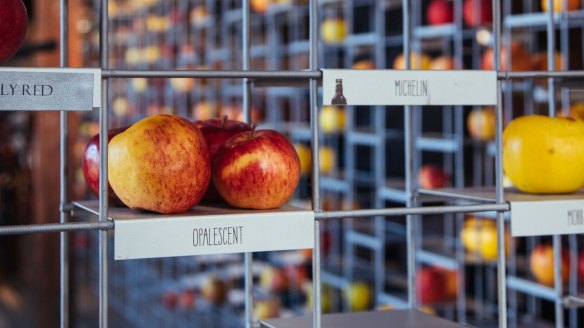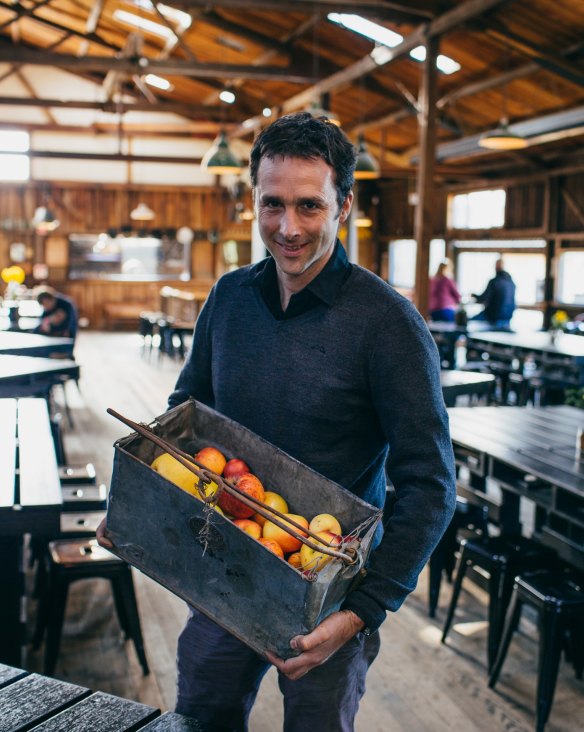Unleashing Tasmania's cider culture: Willie Smith's Cider & Apple Shed

Tasmania's apple-growing heritage dates back to colonial days, and hand in hand with that came cider. Taking cues from that history, people like Dr Tim Jones, head cider maker from organic cider producer Willie Smith's, are bringing a new and uniquely Tasmanian cider culture to a tipping point.
One of the main historical hurdles for Tasmanian cider has, ironically, been apple production itself. Like the difference between wine grapes and table grapes, cider apples are completely different from apples grown for eating. They can be floral, bitter, sour, astringent and tannic to various degrees, and are blended either at the juicing or fermentation stage to create remarkably complex ciders.
Tasmania's strength in table apples meant that most growers just couldn't afford to make cider apples a big part of their crop, and early ciders were more similar to the backyard table apple scrumpies of the English west country; great for friendly, easy drinking, but lacking complexity. But now there are hundreds of cider apple varieties in production, bringing with them game-changing potential to Tasmanian cider.

Much of modern Tasmania's cider making is inspired by English and French influences. British ciders are usually dry and apple-y, while French ciders are more complex, often bittersweet and tannic with funky barnyard aromas. At Willie Smith's, Jones's ciders more closely follow the French-style, but there are uniquely Tasmanian traits that put him right at the advance guard of Tasmania's new cider culture.
Australian craft alcohol has long focused on beer and wine, but the cider and spirit movements in Tasmania are adding more strings to our collective bow. It might well be our history in other forms of alcohol production that ends up bringing a uniquely Tasmanian approach to cider.
Jones says most cider makers in Australia have come to the discipline from other industries, and each brings with them different skills and philosophies. Brewers tend to focus on the bitterness and body of the cider, while keeping the meticulous cleanliness required for good brewing. Winemakers, however, spend most of their energies managing the fermentation process. Both are important for cider making. Tasmania's distilling boom is also adding its character, with Jones ageing some of his ciders in used oak whisky barrels, as well as Willie Smith's housing a stunning custom built and French-designed cider still that's used for making calvados and eau di vie.
It's unfortunate that most of us are first exposed to cider as the sickly sweet beverage of teenage misadventure. Discussing its intricacies over lunch with Jones at Willie Smith's Apple Shed – a tasting room, restaurant and museum just 20 minutes from Hobart – it's obvious to me we've all been missing out terribly.
Sweet commercial ciders are made almost completely from table apple juice concentrate, and are a world apart from the kind of ciders the smaller, artisan producers are trying to champion. It's led most of us to proclaim a preference for dry ciders – as dry as they come – but more accurately, as different as they come from the lolly water that was once the only option.
Trying some of Jones's project ciders, there's obviously a lot more to this cider game than sweet or dry. He can sometimes have more than 100 ferments going at one time that will end up being blended into just a few different products.
His current year's vintage French Blend is made from 23 cider apple varieties and has the texture of tannic pears with floral and apricot notes. It's slightly sweet, but that sweetness is balanced by tannins and a hint of bitter almond. Another new experimental cider he's working on is made from just a single apple varietal – Somerset Redstreak. Jones uses it to produce a cider that's dry and bitter, like a zero-dosage champagne, and starting to produce less characteristics even after just a few weeks of bottle conditioning. It's a great drink now, but it'd also sit well in a cellar for a few years.
It's eye-opening, but it's also a taste of things to come. With cider apple production growing quickly and Australians beginning to develop a taste for good cider, these varieties are now making their way out of the tasting rooms and into restaurants and bottle shops.
If this is what the future of Tasmanian cider holds, it can't get here soon enough.
Create your own Tassie story: gobehindthescenery.com.au
This article brought to you by Tourism Tasmania.
Restaurant reviews, news and the hottest openings served to your inbox.
Sign up